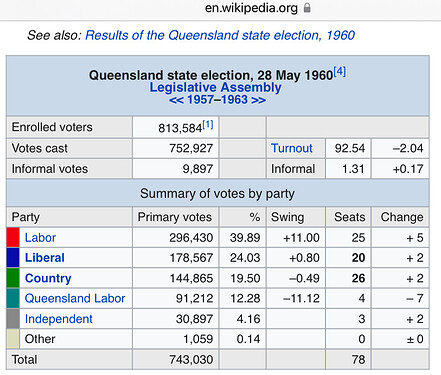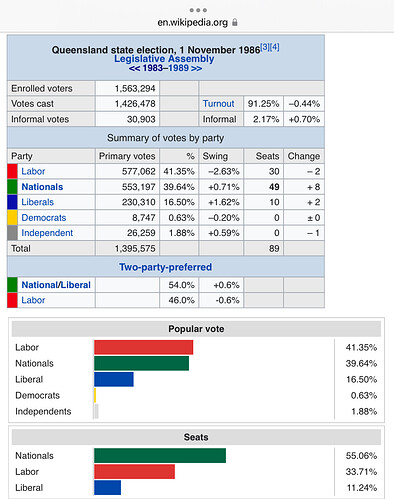.???.
A virtual democracy. ![]()
Another view of election disinformation besides the roles and actions of the AEC
Mike Burgess is the Director of ASIO.
Burgess revealed in the threat assessment that ASIO had interrupted an operation involving an Australian-based individual with ties to a foreign intelligence service. This person worked to identify and promote candidates favourable to the interests of a foreign government.
Reporting by the ABC indicated the foreign government was Russia and the Australian-based person had “close links” to President Vladimir Putin’s regime.
In Jagajaga first is the incumbent (ALP), last is Liberal, 8 on the ballot.
The senate ballot is more interesting with 26 groups having multiple candidates in each, and 12 individuals for a total of 36 ‘easy’ ways to vote. Voting candidate by candidate could require lunch and dinner be brought in?
Democracy in action takes many forms. Only having to number 1 through 6 seems more reasonable in context.
Well Jagajaga is safely Labor, so the Liberal has no chance anyway. Donkey vote will not have any bearing on the result. Even bottom up donkey voting.
Newcastle has always been safe Labor. Not sure this time. Apart from Labor and The Greens, others on the ticket are Liberal, Nats, Pauline’s lot, Clive’s lot, and a couple I had not heard of before but which I researched at the AEC and found them to be generally not acceptable. It was difficult to place them… its a pity theres no equal last. (Oh yeah, I postal voted)
As is often the case with voting, you have to work out the least worst options. Thankfully any candidate you place below at least one of the final two in the race will never receive your vote. So the lower ranked candidates are all effectively placed equal last.
That sounds a little confusing and is possibly misleading.
As to how second, third etc preferences work out can you explain more clearly what is being suggested?
How does one know who the final two in the count are going to be?
What if one candidate for the Reps receives more than 50% of the first preference votes? Who comes in any other place makes no difference.
Your vote always goes to your first preference.
There after ones preference elsewhere depending on whether the Senate or Reps?
Note:
Where ones first preference goes is important.
Votes received by candidates count towards party or individual funding.
‘Election funding - Australian Electoral Commission
Indeed. If you vote for #3 as first preference your vote is first counted for them but then if no candidate got a clear majority your second preference comes into play. If that is for #1 or #2 it will count a second time, etc etc. If “never receive your vote” means they never get elected then OK but we already knew that as they are #3. If it means your vote has no effect at all it is not true.
I think would be clearer to say that if you are not voting for one of the top chances as first preference then choosing your second and third preference carefully is most advisable. If you are voting first for a clear front runner unless there is an upset your lower preferences have no effect. Since in the real world we are not certain what the rankings will be, choosing your preferences wisely is always the way to make your vote match your desire.
This kind of confusion is seen quite a bit. Where a minor party or independent has a how to vote card that favours one major party the other major will try to reduce the effect by saying things like “A vote for Mr Independent is a vote for the other major party”. They are hoping that you will hate their enemy more than them and give them the more valuable first preference. You are of course able to distribute preferences however you like and ignore preference deals and how to vote cards set up by competing candidates.
The reality in our party system is that there are only two groupings that can actually form a Government.
The Liberal/National, and the Labor party.
There are a handfull of seats where an indepedent or other party gets a seat, but that member, or even if they all form a coalition, cannot form Government. In a ‘hung’ parliament, they can support one of the major two, but that is it.
If your intent in voting is to indicate who should form Government, then your #1 on the ballot would logically be one of the two major parties.
If your #1 is for some candidate that has little to no chance of winning, then your #2 is more important. If your #2 is again for some candidate with no chance, then your #3 is more important. And so on.
For those who vote for major parties and therefore voting for who forms a Government, preferences are of no importance. For others, preferences are very important and should be considered properly.
Disinformation can take many forms. This ad campaign seems to have just ramped up in its current guise. Whether it is political advertising will be in the eye of the beholder. Its timing just prior to the poll is breath taking. It is not exactly disinformation but a picture is worth 1000 words, and not funded by ‘the party’.
One would like to think it is given the timing non compliant with current electoral legislation. Is there the mandatory authorised by advice attached? Certainly campaigns by third parties EG unions, business groups espousing a policy or party is good or bad seem to carry such annotation. Perhaps the staff at the AEC avoid those sites where exposure is likely?
No, as I understand it if we all vote for Independents then the Independents can form a Government by working together. They can select a Prime Minister, they can select Ministers, they can do all the things that the major parties do. It is just difficult when we are told that there will be a “hung” parliament and so your vote should only go to the major parties. The idea that only Lib/Nat or Labor are the only ones who can form a Government is in reality disinformation.
What happens is that the independents can go to the Governor General and say that they have enough seats and an agreement that they are able to form a Government. The Governor General is required to make sure they are able to work together and if that criteria is satisfied, then Government is formed. Nothing in the Constitution of Australia says that it must be Labor or Liberal or National party.
The Governor General can in fact call Ministers from outside of Parliament but they can only be Ministers for 3 months unless elected in the meantime to the House of Reps or to the Senate.
A link to the Constitution of Australia
You didn’t even get past the second word of my post before going off into hypothetical land.
The reality is that the Government of Australia is major party based. And the same for state Governments.
No I read your post in it’s entirety and I believe it is wrong.
Wrong assertion, they can form Government.
Why? If I want independents to form Govt why would I place a #1 with a major party? That is only supporting major parties and is entrenching the idea that only the majors can form Government, which is incorrect.
Again why do I have to want to vote for a major party to form a Government as you assert is what the vote is for with your statement " therefore voting for who forms a Government".
That’s only the reality the two would want us all to believe in. History says there are more than just two options.
And can you state when in history some party other than the two major parties, and given that they have changed names over the years, have formed Government?
Look, I would hate for this to degenerate into a slanging match, but I am simply stating how the system works at the moment.
When I say reality, I mean this:
The state of things as they actually exist, as opposed to an idealistic or notional idea of them.
Some 85% or so of voters in elections vote for one of the three major parties. I include the Greens as the third, but a long way behind the major two.
Whilst that is the case, only the two majors will get enough seats in Parliament to have a shot at forming Government.
Other parties which have formed government:
- Protectionist Party, 1889–1909. Formed first federal government with Labor Party support;
- Free Trade Party, 1889–1909. Renamed Anti-Socialist Party in 1906
- Commonwealth Liberal Party, 1909–16. Formed from Anti-Socialist Party and elements of the Protectionist Party (also called ‘the Fusion’)
- National Labor Party, November 1916–February 1917. Formed from elements of the Labor Party
- Nationalist Party, 1917–31. Formed from merger of the National Labor Party and Commonwealth Liberal Party
- United Australia Party, 1931–45. Formed from Nationalist Party, Australian Party (former Nationalists) and elements of the Labor Party. Predecessor to the modern Liberal Party.
I also understand the “reality” as the majors would have us understand. It is disinformation and suits their hold on the political reins of power. We are often told that independents result in “hung” parliaments as though this is a bad thing, it is just a term to mean that no pre-existing bloc or alliance eg Liberals or Labor has enough seats to form Government. Independents can form a coalition and form a Government, they can side with a larger party and form a coalition that forms Government, they can join with minor parties and form Government. All that is required is that enough House of Representative members join together and approach the Governor General and ask to form the Government. They can even call Ministers from any other party even if they are not the ones that have formed Government eg Labor or any other party could have one of it’s members serving as a Minister in the executive even if they do not hold the majority. This occurred particularly during the war years but as an example that involved pre war and war times there is William Hughes who was a Labor member and served in the cabinet of the UAP from 1934 to 1941 under Joseph Lyons and Sir Robert Menzies.
There is theory and possibility, and there is reality. Does there need to be a disrespect of either?
Given enough seats anything is possible, but given the electoral system and historic preferences, what are the chances of other than a coalition or ALP government (even if a minority supported by a few independents or minority parties) today or in the foreseeable future?
Once upon a time in a land far far away. QLD actually. There was the Country Party, Liberal Party and Labour Party (times 2). Three cornered contests were common.
One outcome to demonstrate just how things can go 3 ways and then some. Note that with just 19.5% of the vote the country party took 33% of the seats and had a choice of where to seek support to make up numbers as the dominant party.
Then there was 1986. Any thoughts that the Liberals and National Party (previously Country Party) were one and the same, there is an answer in who formed government.
Unlikely to be repeated at a Federal level, Barnaby could only dream.


